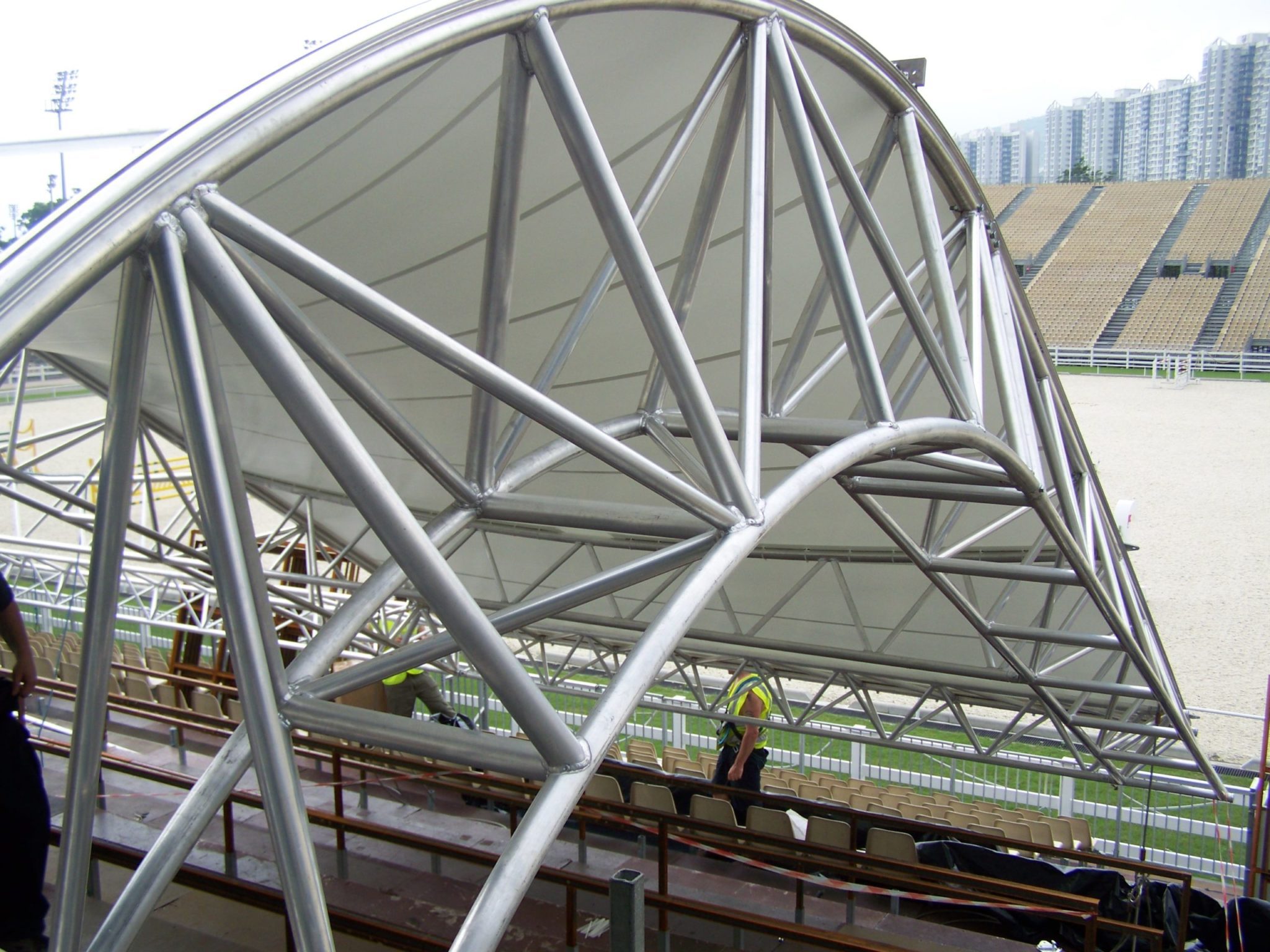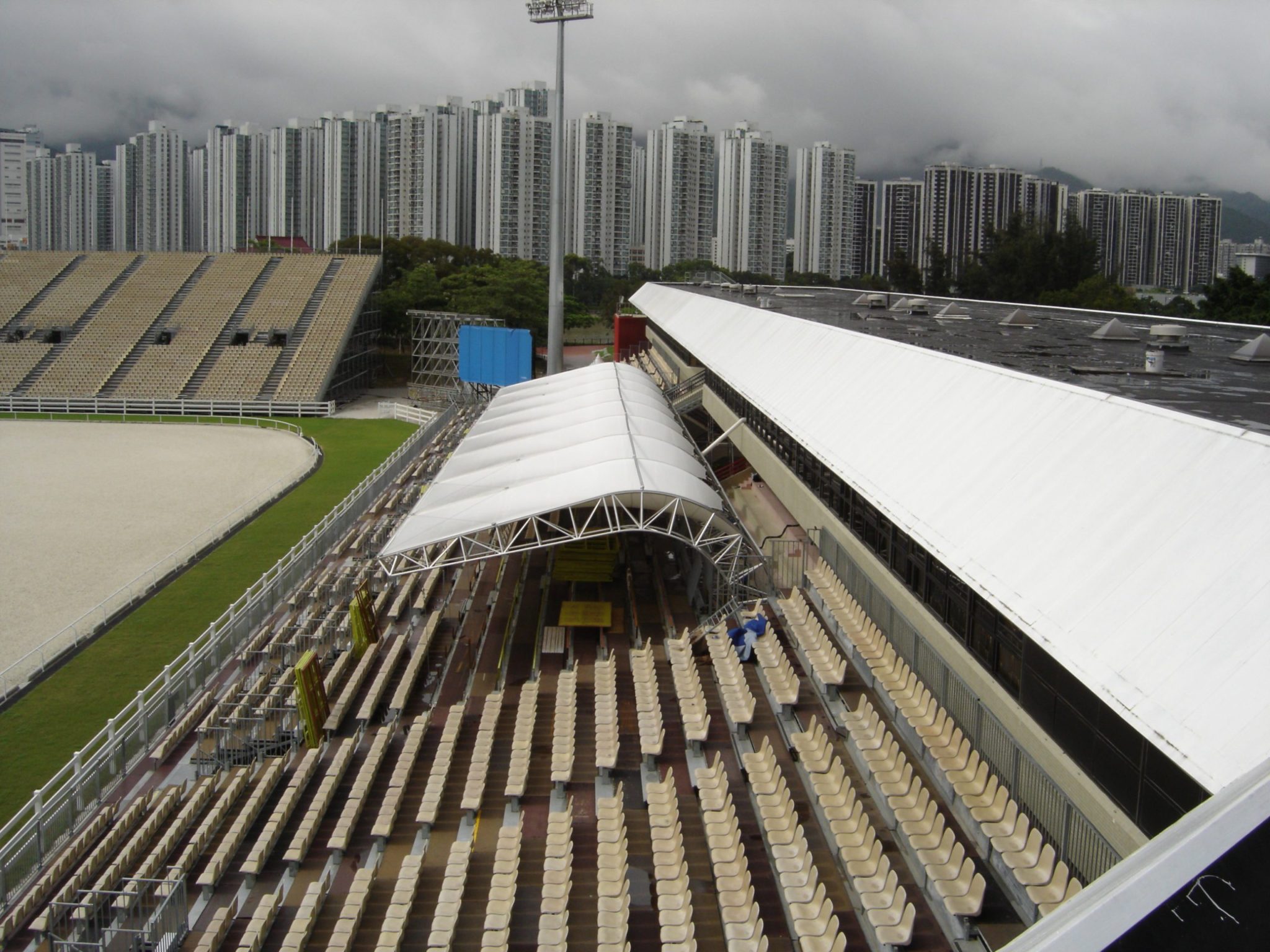

Clearview is the world's first fully reconfigurable seating deck. A largely common set of components combine to create flat floors and a seating deck with 9 risers between 133mm and 400mm. The fit, finish and stiffness of the system means that many spectators are not even aware they are on a temporary structure.
tensARC led the design team that developed Clearview for Arena Seating Ltd. We also provided extensive specialist engineering support to the Arena Group for the roll out of the system. This included the Queens Diamond Jubilee and four venues at the London Olympics. The main showcase for the system was the 17,000 seat Beach Volleyball venue at Horse Guards Parade, which was set in the round, open to the London skyline on one side and a 6 row cantilever on the other.
The Clearview system meets sustainability objectives in several ways. From a social perspective, and by design, the structure can be optimised to provide the best spectator experience across a wide variety of venues, sports and activities. From an economic perspective, reuse of the same structure at other sites produces a significant return on investment. In the past decade, the same set of parts used at the London Olympics in 2012 have been reused many times, at various venues. The ability to store and transport the smallest number of components, within the smallest footprint, further reduces cost and environmental impact.


tensARC, partnering with Arena Seating Ltd, was selected to design and deliver a temporary deployable grandstand roof for the Hong Kong Jockey Club, at the equestrian venue of the 2008 Beijing Olympics. The successful design and delivery of a bespoke, attractive, robust roof took place in under 12 months.
Specifically, we led the design, manufacture, transport and assembly of a unique structure that met a stringent combination of requirements for aesthetics, sightline restrictions and severe weather. For example, a motorized canopy was needed so that this large shade structure could close quickly when a typhoon or cyclone threatened.
Precision planning was even more critical than for a typical deployment, given the novel design and the geographical distance from the client. tensARC conducted a site visit in Hong Kong before the contract award to confirm requirements and conditions. After award, and back in the UK, tensARC led a test-build of the first module to assess the design and surface issues before work began in Hong Kong. Later, and soon after assembly on site, tropical weather tested the structure. One cyclone followed another but with no failure or harm. Finally, before full deployment for use by spectators and the world’s media, tensARC went to Hong Kong for a final inspection. A set of “wash-up” meetings were conducted at the end of the deployment, and the partnership leveraged insights for the London Olympics in 2012.